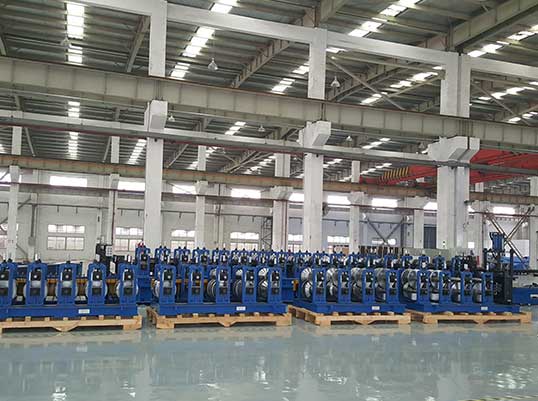Navigation Menu
Contact Us
- Email:
- info@wxavatar.com
- Address:
- Yurong Village, Yuqi Street, Huishan District, Wuxi, China.
Release Date:Jul 28, 2025 Visit:41 Source:Roll Forming Machine Factory
Auxiliary machines are essential components in modern manufacturing processes, supporting primary equipment to ensure smooth and efficient operations. By performing supplementary tasks, these machines help optimize workflow, reduce downtime, and improve overall production line performance. This article explores how auxiliary machines contribute to enhanced efficiency in manufacturing environments.

1. Supporting Core Operations
Auxiliary machines handle secondary tasks that are critical for maintaining continuous production. Equipment such as conveyors, feeders, and sorting systems work alongside primary machinery to transport materials, align components, and organize outputs. By automating these processes, auxiliary machines reduce manual intervention, minimizing errors and speeding up production cycles.
2. Reducing Bottlenecks
Production delays often occur when primary machines wait for materials or components to be prepared. Auxiliary machines, such as pre-processing units and buffer systems, help mitigate these bottlenecks by ensuring a steady supply of materials. This synchronization between primary and auxiliary equipment prevents idle time and maximizes throughput.
3. Enhancing Precision and Consistency
Many auxiliary machines, including robotic arms and precision alignment tools, improve the accuracy of manufacturing processes. By handling delicate or repetitive tasks with high precision, they reduce defects and rework, leading to higher-quality outputs. Consistent performance from auxiliary machines ensures that production standards are maintained throughout the line.
4. Improving Maintenance and Longevity
Auxiliary machines often include monitoring and diagnostic systems that track the condition of primary equipment. Sensors and automated lubrication systems help detect wear and prevent unexpected breakdowns. By facilitating proactive maintenance, these machines extend the lifespan of production line assets and reduce unplanned downtime.
5. Enabling Flexibility and Scalability
Modern auxiliary machines are designed to adapt to different production requirements. Modular systems can be reconfigured to accommodate new product lines or changes in demand. This flexibility allows manufacturers to scale operations efficiently without significant overhauls to the primary production setup.

Conclusion
Auxiliary machines play a vital role in enhancing production line efficiency by supporting core operations, reducing bottlenecks, improving precision, aiding maintenance, and enabling scalability. Their integration into manufacturing processes ensures smoother workflows, higher productivity, and better resource utilization. As industries continue to advance, the strategic use of auxiliary machines will remain key to maintaining competitive and efficient production systems.